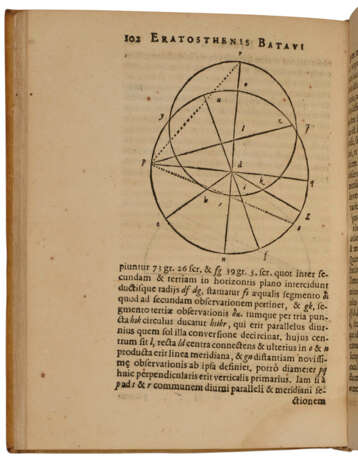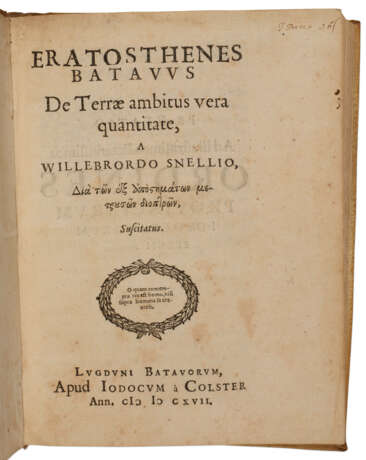ID 887854
Lot 81 | Eratosthenes Batavus
Estimate value
$ 3 000 – 5 000
First edition of Snel’s most important work, a foundational text of geodesy and navigational science. "With the development of their oceanic commerce, the Dutch became very interested in the most accurate possible determination of the length of a degree of longitude. A professor of mathematics at the University of Leiden, Snel undertook the task using the method of triangulation first proposed by Gemma Frisius in 1533 but developed by Snel to such an extent that he ma rightfully be called one of its founders. He measured the distance between Alkmaar and Bergen-op-Zoom, which lay approximately on the same meridian, and also the distance between the parallels of Alkmaar and Leiden, and from the mean of these two measurements calculated the length of degree to be 352,347 feet, a more accurate reckoning than any previous attempt" (Norman). Before Snel could make his calculations, however, he had to establish a standard unit of measurement—proposing the Rhenish foot, of which he includes an image in this book. This proved slightly problematic, as during the process of printing the size of the paper changed slightly, distorting the measure of the foot and necessitating a correction to the final page. The title of the present work, "The Dutch Eratosthenes," is a reference to the Greek mathematician Eratosthenes, who famously calculated the circumference of the Earth. Honeyman 2864; Norman 1963.
Quarto (193 x 144mm). Full-page engraving showing the triangulation of Holland on p.168, numerous woodcut diagrams in text (scattered marginal wormholes, some browning, some light dampstains). Contemporary Dutch vellum, title in ink on spine. Provenance: signature on flyleaf: "ex libris petri Dxxxx."
| Address of auction |
CHRISTIE'S 8 King Street, St. James's SW1Y 6QT London United Kingdom | |
|---|---|---|
| Preview |
| |
| Phone | +44 (0)20 7839 9060 | |
| Buyer Premium | see on Website | |
| Conditions of purchase | Conditions of purchase |




